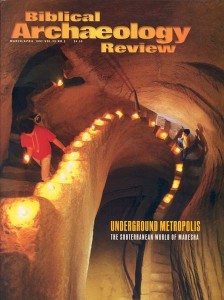Philology Recapitulates Paleography
I am not surprised that some of the leading paleographical authorities in our field have so severely criticized the effort of Rogerson and Davies to place the Siloam Inscription in the Hasmonean period. Their philological handling of the Biblical and extra-Biblical data is equally unsatisfactory.
Paleography and philology have much in common; they both depend on typologies: Letter forms as well as language are subject to an unceasing process of development and innovation, marking, by and large, distinguishable historical periods.
Rogerson and Davies make no serious effort to assess the linguistic profile (lexicon, syntax) of the Hebrew in the Siloam Inscription in order to determine its location within the general history of the language.
Fortunately, we now possess incontestably dated texts composed in and around the Hasmonean period, such as the Dead Sea Scrolls, which clearly illustrate the kind of Hebrew employed in literary compositions at that time. On the surface, the Hebrew of these texts may strike the reader as classical Hebrew. However, it is widely recognized—by Hebrew linguists as well as Biblical philologists, in Christian as well as Jewish circles, and by conservative as well as radical scholars—that the “classical” flavor of this style, which was current in the Hasmonean period, is misleading; it is nothing more than an external facade. Beneath the surface, these compositions exhibit numerous late, post-classical features that betray their Second Temple linguistic milieu.1
Already a library member? Log in here.
Institution user? Log in with your IP address.

